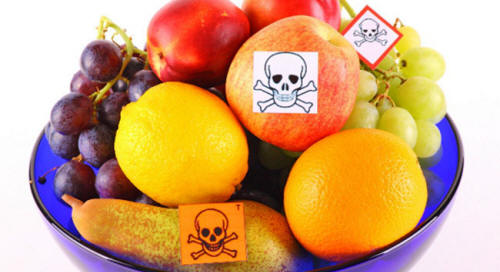|
from
NaturalSociety Website
Bypassing the regular rhetoric proposed by GMO supporters that they are 'substantially equivalent to non-GM crops,' I'd like to offer another strain of inquiry.
Putting the transgenic technology that
has allowed most genetically modified crops to exist, aside, why
don't we look at something else that is perhaps even more alarming
about continuing to plant genetically modified seed - like
pesticides. The fact is that over 99% of GMO acreage is engineered by chemical companies to tolerate heavy herbicide (glyphosate) use and/or produce insecticide (Bt) in every cell of every plant over the entire growing season.
This alone should cause any level headed scientist or farmer to take note.
If then, more than 80% of the 'staple' crops in the US are planted with GM varieties of corn, soy, and cotton, then we can assume that we are all eating a big heaping helping of those herbicides and pesticides, right?
One doesn't naturally follow the other, but a recent study titled, "Pesticide Use on Genetically Engineered Crops" and published by Dr. Ramon J. Seidler, Ph.D., former Senior Scientist at the Environmental Protection Agency, proves that this is in fact true.
The United States Department of Agriculture (USDA) writes in a report:
Whether one agrees if GM seed itself is safe, the use of systemic insecticides, which coat GMO corn and soy seeds and are incorporated and expressed inside the entire plant, has exploded in the last ten years.
This includes:
To wit - an alarming majority of pesticides used on U.S. farms do not show up on our food.
And yet,
So How can GM Crops be Deemed 'Safe?'
If we were to look at even ONE of these chemicals and its effects on the human body, let alone its ramifications for use long term in the environment, we are looking at a serious problem.
Compound this level of devastation with the fact that we are using ever-more herbicides and pesticides (with the USDA and FDA rubber stamping new concoctions proposed by biotech almost bi-annually) and you can see that we are literally under weaponized chemical warfare as a nation.
A government-published document states that:
However, when did you get notice of Monsanto or Dow AgroSciene's latest chemical application?
Where exactly are those surveys being conducted - in your backyard? It seems obviously difficult to ignore studies showing the toxicity of these poisons in singularity.
How can GMO-supporters argue that GM crops are safe now...?
|


